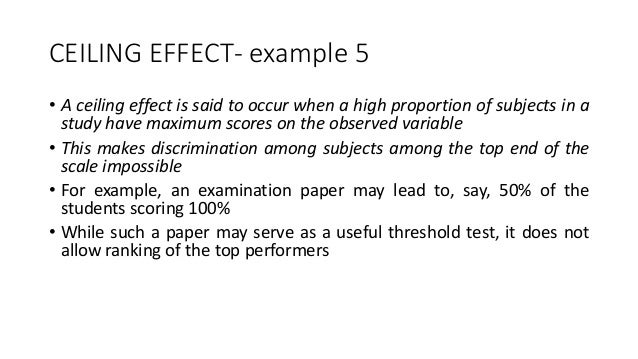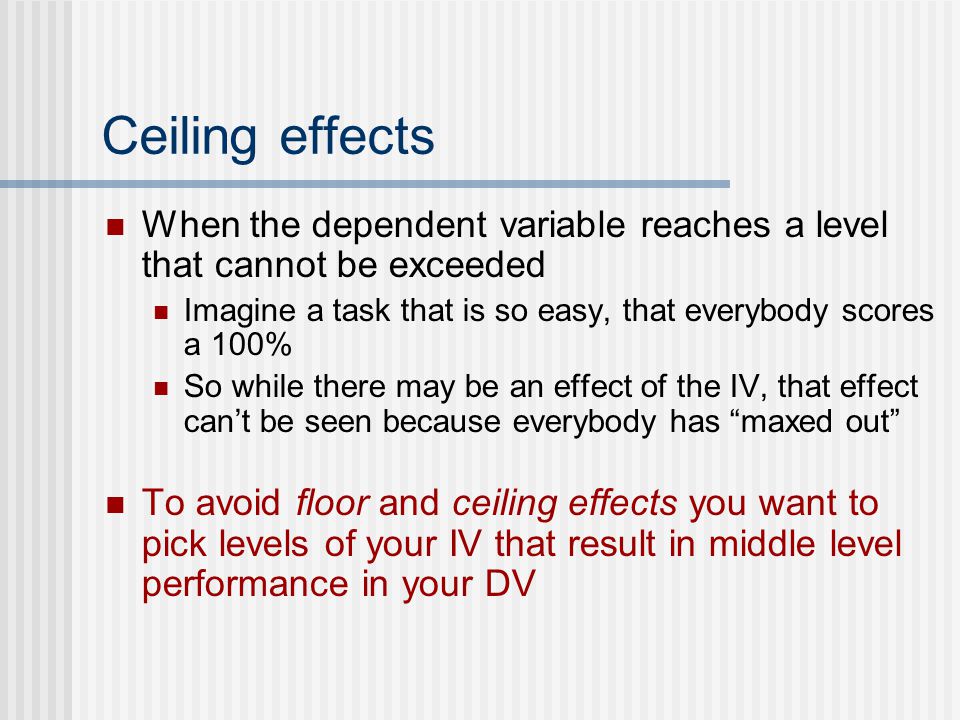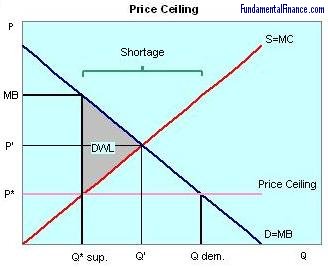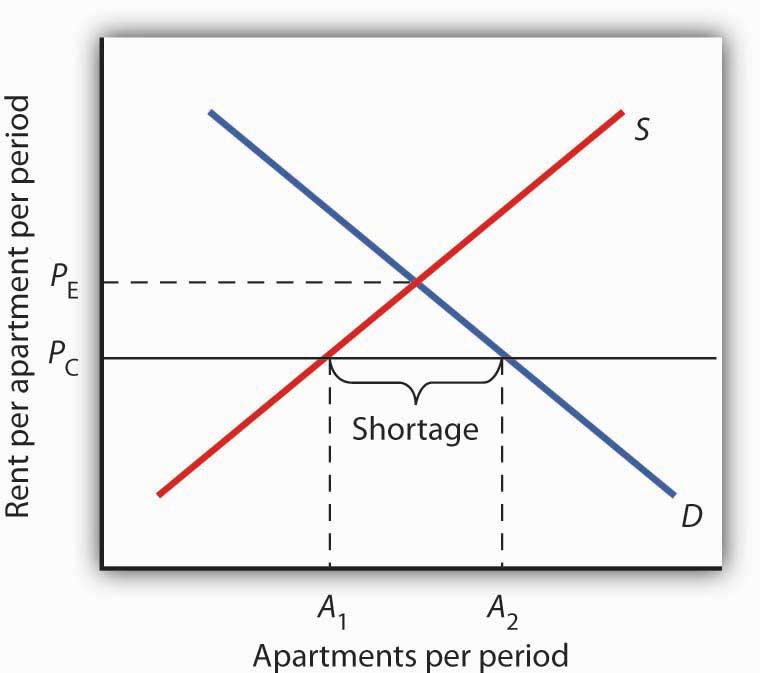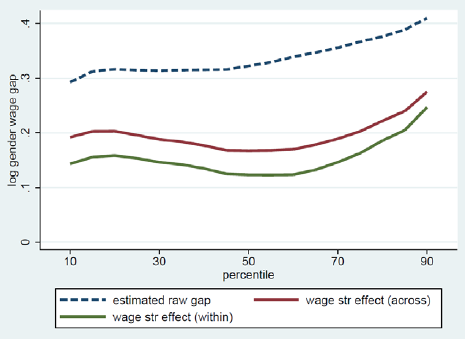Ceiling Effects Vs Floor Effect Stats

Ceiling effects and floor effects both limit the range of data reported by the instrument reducing variability in the gathered data.
Ceiling effects vs floor effect stats. In statistics a floor effect also known as a basement effect arises when a data gathering instrument has a lower limit to the data values it can reliably specify. The most important thing to remember about ceiling and floor effects is how they arise. When pile up at low end when cannot go below a particular value. The lower limit which affects dependent variables is referred to as the floor and can badly skew a data distribution if not accounted for.
This is a ceiling effect approached from above. They arise not because a program in a control condition is very good or bad but because the program performs very well or poorly on a particular set of test problems. The floor effect is what happens when there is an artificial lower limit below which data levels can t be measured. There is very little variance because the floor of your test is too high.
The ceiling and flooring effects of more than 15 were. The other scale attenuation effect is the ceiling effect floor effects are occasionally encountered in psychological testing. Ceiling and floor effect. Well after a look at the actual data i had not been able to see it for a couple of days due to it problems there s actually not much evidence for a floor or a ceiling effect.
If ceiling is low probably the wall décor will cost less as their extent will be smaller but it s a conditional thing because with regard to the way and materials of décor it can happen so that the décor of the premise with high ceiling will cost less than the one with low ceiling. A floor effect is when most of your subjects score near the bottom. The ceiling and flooring effects were calculated by percentage frequency of lowest or highest possible score achieved by respondents. Let s talk about floor and ceiling effects for a minute.
No one scored the lowest score and only 1 of people scored at the highest score. This strongly suggests that the dependent variable should not be open ended. This is even more of a problem with multiple choice tests. Usually this is because of inherent weaknesses in the measuring devices or the measurement scoring system.
For example it is easy to see a ceiling effect if y is a percentage score that approaches 100 in the treatment and control conditions. In layperson terms your questions are too hard for the group you are testing.


